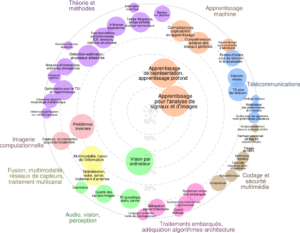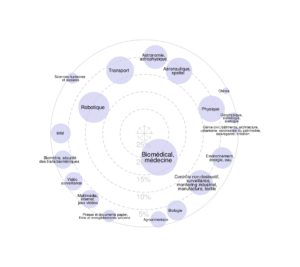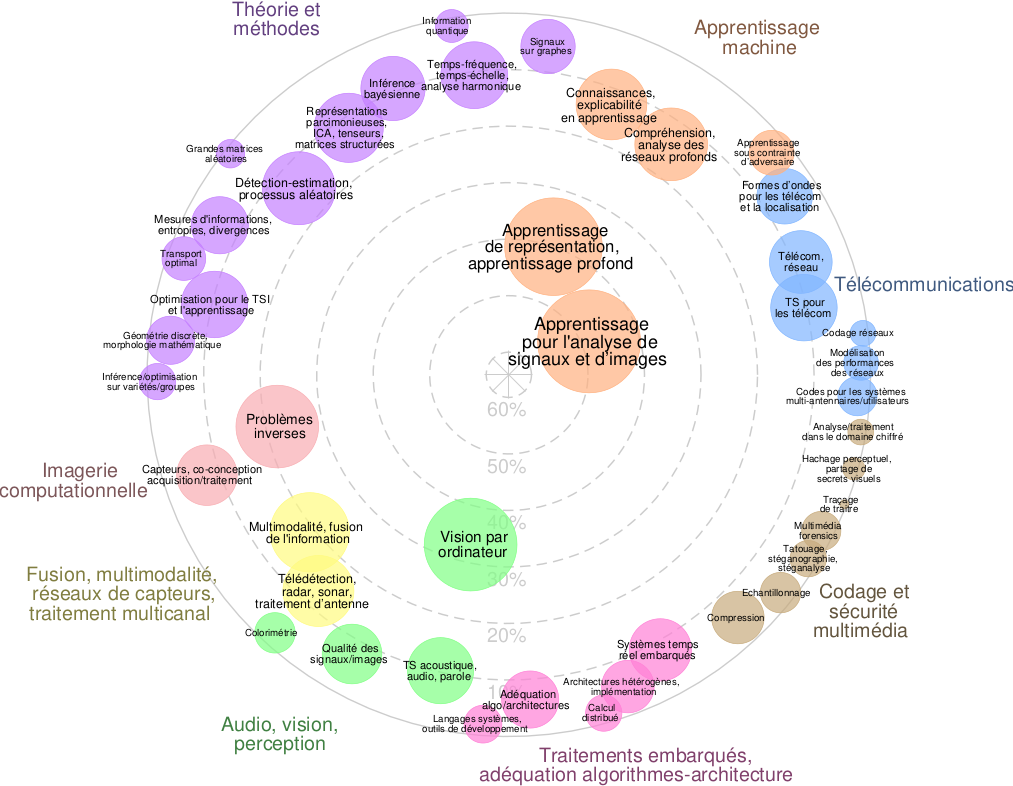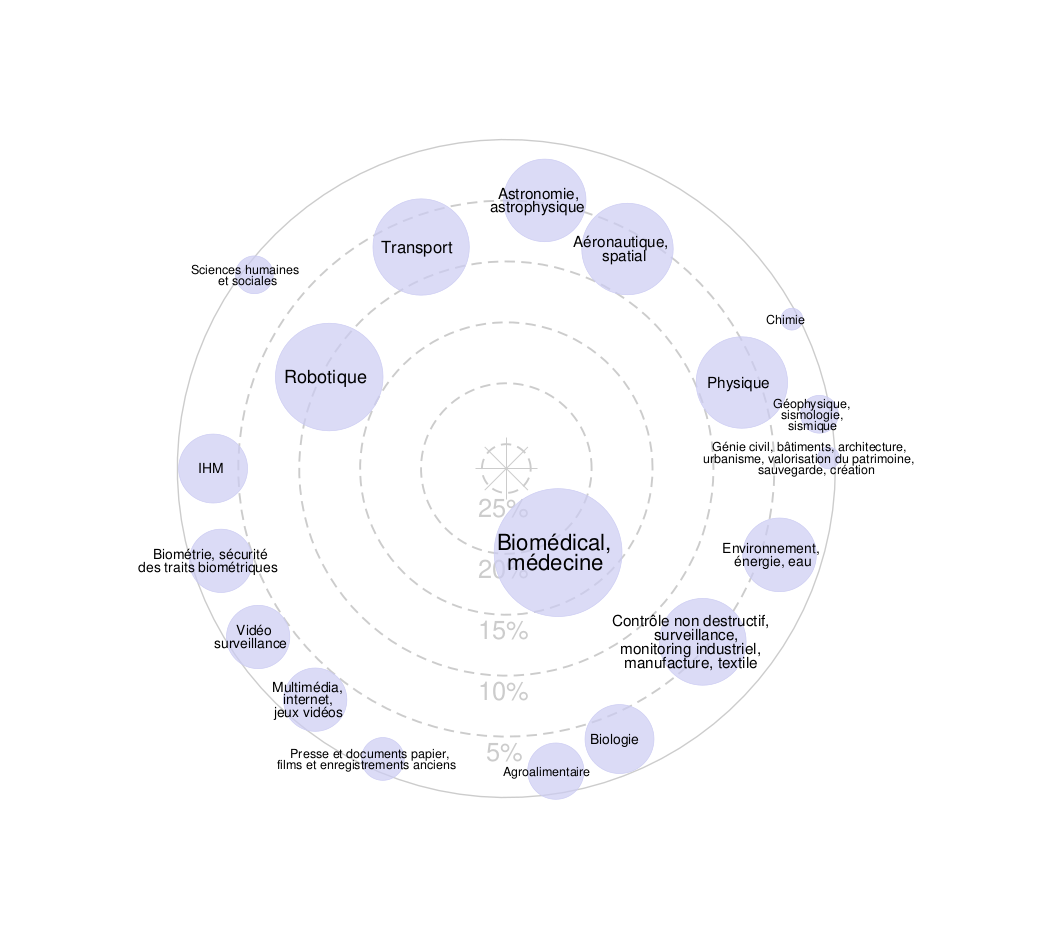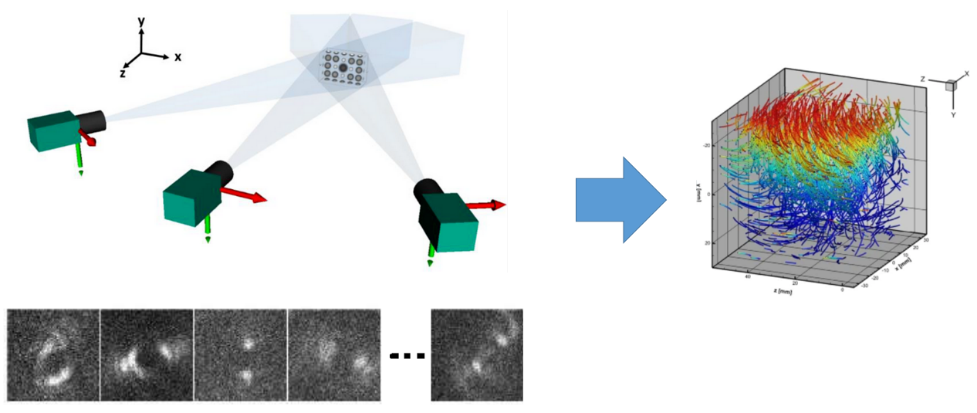
Laboratory
The Institut Pascal is a joint interdisciplinary research and training unit with 400 people, under the dual supervision of Université Clermont Auvergne (UCA) and CNRS. The CHU University Hospital of Clermont-Ferrand is a secondary supervisor of the unit. The Institut Pascal is a member of Clermont Auvergne INP, which includes three engineering schools: ISIMA, POLYTECH Clermont, and SIGMA Clermont.
The ISPR (Image, Systèmes de Perception, Robotique) department of the Institut Pascal focuses on research in Computer Vision and Robotics. The goal of ISPR is to develop theoretical, methodological, and architectural concepts for the perception and control of systems to make them as autonomous as possible.
Objectives
The aim of this project is to study airflow in large cavities, such as atriums or conference rooms, by juxtaposing several different 3DPTV systems. A procedure for multi-3DPTV multi-camera self-calibration will be developed to express all particle trajectories in a common 3D coordinate system.
Self-calibration of camera networks aims to jointly estimate the intrinsic and extrinsic parameters of the cameras by using natural features—i.e., the same features present during the normal use of the network—instead of predefined patterns designed for calibration. To reduce the expertise required for the 3DPTV measuring operator, a self-calibrating technique should be developed that enables the camera network to configure itself solely by using particle tracking and matching. This task typically requires that enough features are seen simultaneously by at least two cameras, which is challenging in our context due to the difficulty of finding a sufficient number of correct matches. The complexity arises from the density and similarity in the appearance of features, the possible presence of cameras with non-overlapping fields of view, and potential imperfections in synchronization.
To enhance the generation of candidate matches, we will investigate the use of deep neural networks for both tracklet generation and the matching steps, building on state-of-the-art architectures such as SuperGlue.
Context
This work is part of the TRAQ project (Three-Dimensional Tracking of Monodisperse TRAjectories by Quantitative Measurements), funded by ANR. In buildings and, more generally, in confined ventilated spaces such as aircraft cabins, it is crucial to predict the trajectory and velocity of air and airborne pollutants or contaminants. This challenge is both environmental and energy-related.
From an environmental perspective, the key issue is indoor air quality control, which is a public health concern. Indoor air contains particles emitted by human breathing and activities, as well as from indoor furniture. These particles can be harmful to occupants. For example, many chemical compounds such as formaldehyde or carbon monoxide can be fatal. Predicting the trajectory of such airborne particles makes it possible to assess exposure risks for building occupants, optimize ventilation strategies, and even improve emergency evacuations in cases of fire or dangerous gas emissions. The COVID-19 crisis is a stark reminder of the importance of predicting the movement of indoor contaminants.
From an energy perspective, predicting the trajectory and velocity of air allows for the optimization of heating and cooling systems dedicated to indoor thermal comfort. For example, in low-energy buildings, it helps determine the optimal shape and placement of heating devices and air diffusers to ensure the best coverage of living areas, achieving maximum comfort at minimal energy cost.
The developed code will be experimentally validated in the CETHIL’s test cell MINIBAT. Validation will involve comparing results obtained using multi-3DPTV with helium-filled bubbles to experimental data from Chi Ken Nguyen’s recent PhD thesis, which used multiple-point hot sphere anemometry in the same facility. MINIBAT has the dimensions of a realistic indoor rectangular room. Its thermal boundary conditions are fully controlled, allowing the simulation of adjacent room effects with fixed temperatures along five faces of the test cell, and the influence of outdoor climatic conditions along the remaining face. It also features an air inlet with controllable velocity and temperature. The test cell was designed to enable a highly detailed characterization of indoor thermal environments under controlled and reproducible conditions.
Once validated, the algorithm will be translated into a low-level language and integrated into the real-time processing system.
Required Profile
- PhD Thesis.
- Skills in 3D computer vision, AI and machine learning, programming.
- Interest in conducting experiments.
Gross Pay: Approximately €2400 per month.
Duration: 18 months.
Contact: Send a CV (recommendation letters are highly appreciated) to:
Omar Ait Aider, Email: omar.ait-aider@uca.fr, Phone: +33 4 73 40 55 67
François Berry, Email: francois.berry@uca.fr, Phone: +33 4 73 40 72 52


